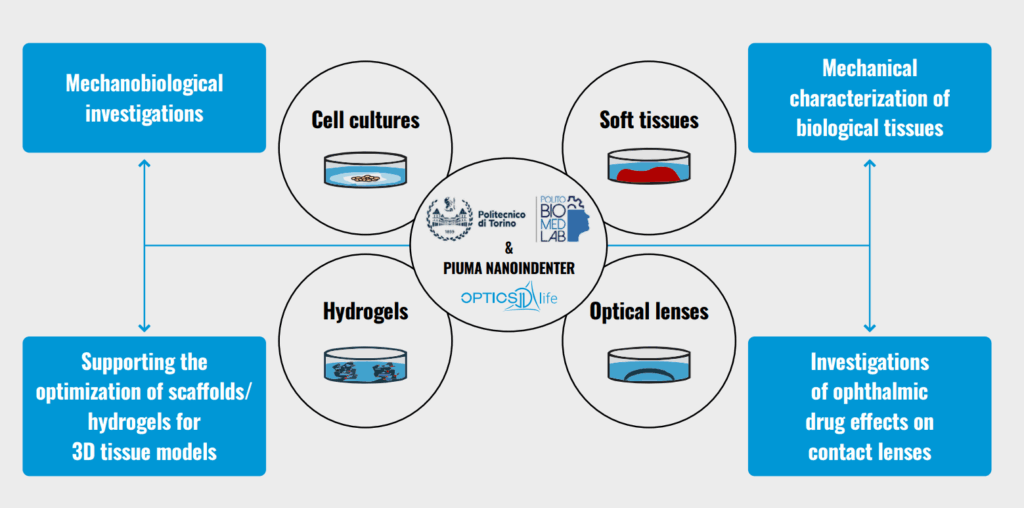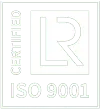Uncovering the mechanical secrets of biological tissues and materials
© 2024 Optics11 Life B.V
Unlock the full potential of your tissue engineering and biomaterials research with Optics11 Life’s case study. Dive into the innovative work of the Solid and Fluid Biomechanics Group at Politecnico di Torino, led by Prof. Alberto Audenino, featuring insights from Associate Professor Diana Massai and Postdoctoral Researcher Gianpaolo Serino.
Discover how the Piuma nanoindenter is revolutionizing the study of soft tissues and biomaterials, providing unparalleled insights and capabilities that traditional methods cannot achieve. This essential resource is perfect for researchers, biomedical companies, and anyone involved in tissue engineering and biomechanics.
Within the Department of Mechanical and Aerospace Engineering (DIMEAS) and the Interdepartmental Center PolitoBIOMed Lab of Politecnico di Torino, Associate Professor Diana Massai and Postdoctoral Researcher Gianpaolo Serino are part of the Solid and Fluid Biomechanics Group led by Prof. Alberto Audenino and work in tissue engineering and tissue biomechanics. With extensive experience and expertise in characterizing tissues and biomaterials at the macro-scale, the group decided to expand the infrastructure by purchasing a Piuma nanoindenter in 2019. This addition allows them to characterize tissues and biomaterials at the micro-scale.
“Nanoindentation is a very powerful tool for studying the mechanical characteristics of materials. You must consider several conditions. But it’s very impressive. This technology, combined with advanced imaging techniques, allows the full mechanical characterization of materials presenting heterogeneous characteristics.”

In collaboration with numerous research groups and providing their expertise to several biomedical companies, Massai and Serino work on various applications that include the characterization of a wide range of tissues and materials. Examples of these applications include (but are not limited to) supporting the development and optimization of scaffolds or hydrogels designed for mimicking physiological or pathological tissues, investigating the mechanobiological response of pancreatic tumor cells to substrate stiffness, characterizing decellularized bovine pericardium for prosthetic heart valve development, and studying the effect of ophthalmic drugs on contact lenses.
Massai explains, “In the last 5 years we have built experience and learned how to use the instrument, which we are now confident about applying.” Serino adds, “The more you use it, the more you can apply it to different situations and testing needs. It’s a continuous process. It allows a researcher to go into depth about the possibilities. Now, we can test materials that we couldn’t test before. This technology allows you to do things that weren’t possible before.”
Where conventional technologies focus on understanding the nano- and macro-scale, more insights into the mesoscale or micro-scale are necessary, especially for soft tissues and biomaterials. Serino indicates, “There are technical problems when you want to test these soft materials with classical techniques, such as uniaxial or biaxial tensile tests. With the Piuma, because you use an interferometer, you can control the deflection of the tip. It’s a very powerful technique because you can resolve a very small amount of displacement.” Serino adds, “This technology provides the link between the nano- and the macro-scale. Something that is very important to study, in my opinion. It’s the missing link.”
In January 2024, Marta Tosini, Diana Massai and Gianpaolo Serino, with further collaborators, published a paper about the characterization method they developed using the Piuma. This study proposes a nanoindentation-based technique to quantitatively analyze time-dependent load relaxation responses of soft biological tissues and hydrogels. This approach identifies the time-dependent behaviors of each sample at the cell-length scale, facilitating quantitative comparisons of their mechanical properties.
Find the full publication here: www.mdpi.com/2076-3417/14/3/1093

